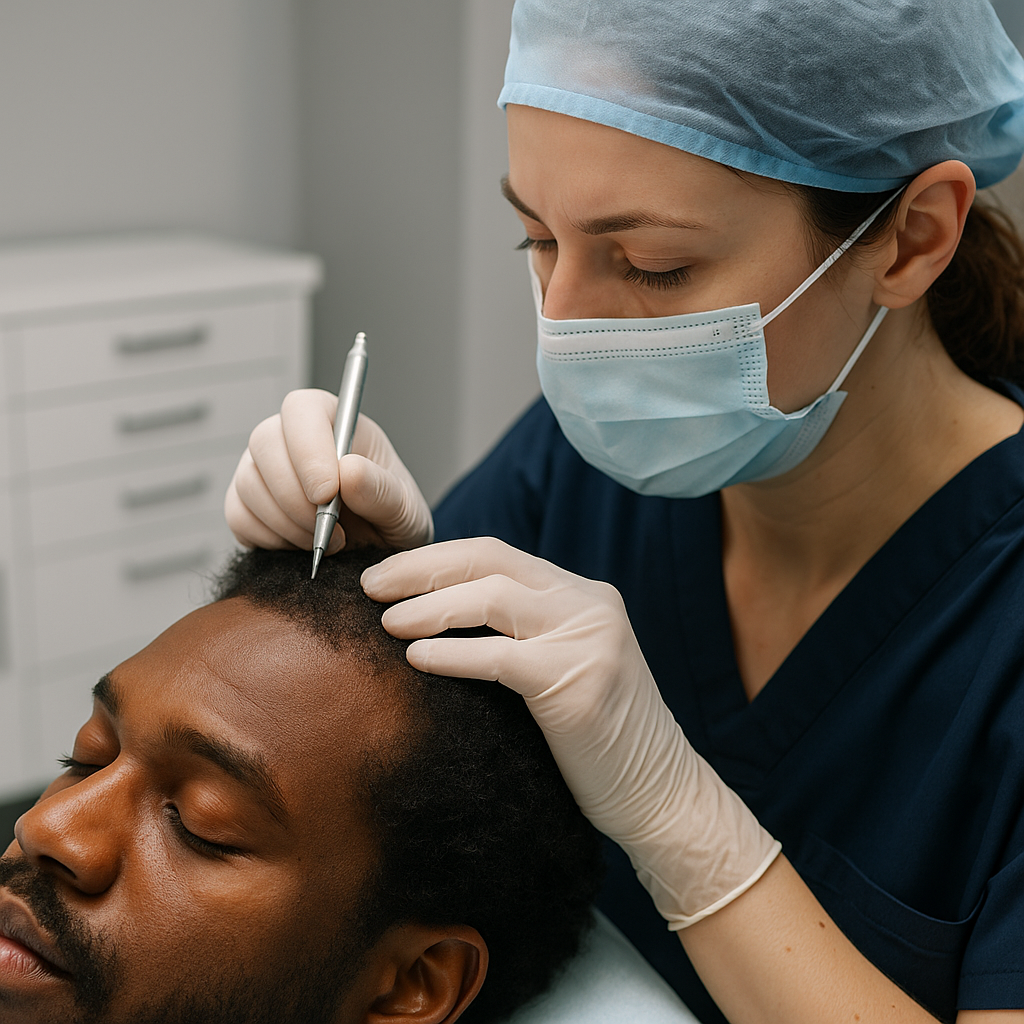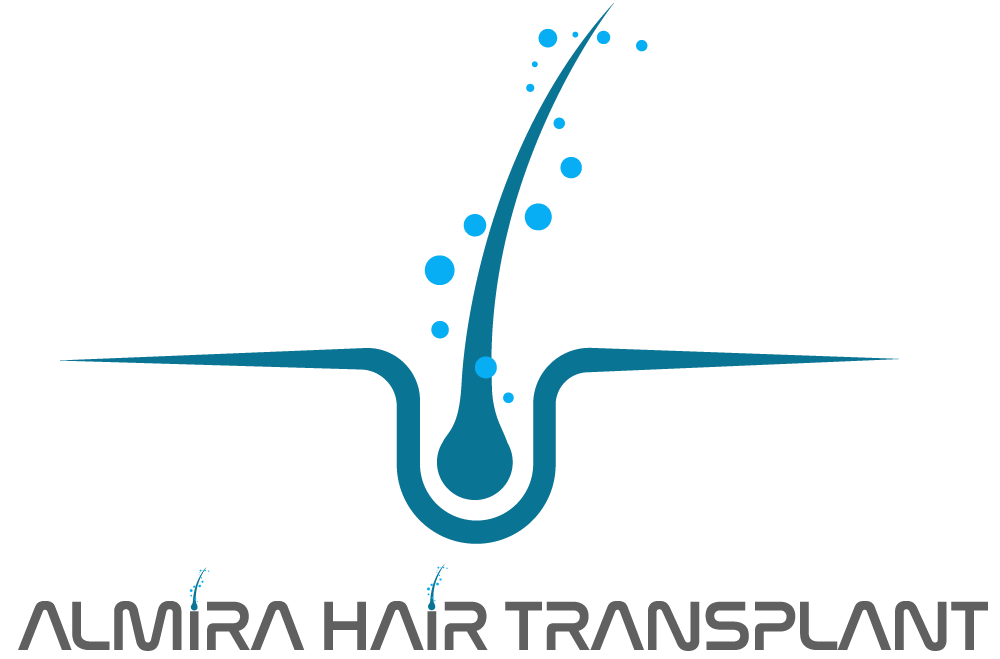The Golden Tip for a Natural Hairline in Afro Hair Transplants: The Distribution Angle

The Golden Tip for a Natural Hairline in Afro Hair Transplants: The Distribution Angle
Afro-textured hair, with its unique curls and voluminous texture, has a distinctive structure that requires a specialized approach during transplantation. Among the many factors influencing the success of an Afro hair transplant, the naturalness of the hairline is the most crucial. The hairline defines facial balance and aesthetics, and the key to achieving a natural result lies in one technical detail — the distribution angle of the grafts.
The distribution angle, also known as the graft implantation direction, determines how the transplanted hair will grow. In Afro hair, this angle is especially critical due to the curly nature of the follicles. Incorrect angles can cause the hair to grow too upright, lose its natural curl pattern, and appear artificial.
The Unique Anatomy of Afro Hair
Afro hair differs significantly from straight or wavy hair, primarily because of its curved follicular structure beneath the scalp. The follicle does not grow in a straight line but in a curved, almost “C-shaped” trajectory.
-
Curved roots: The hair follicles themselves are curly, not just the visible strand. This means the incision angle must follow the natural curvature of the follicle.
-
High volume effect: Afro hair provides a denser visual appearance with fewer grafts, but maintaining this density depends on the precision of the distribution.
-
Low exit angle: Afro hair typically emerges from the scalp at a shallow angle — around 15 to 25 degrees — allowing the curls to lie naturally and harmoniously along the scalp.
These anatomical characteristics demand an experienced surgeon who understands how to match the graft orientation with the natural curl pattern of the patient’s hair.
Why the Distribution Angle Matters
The accuracy of the graft placement angle is the foundation of a natural-looking Afro hairline. During transplantation, each graft’s direction, angle, and depth must be individually adjusted.
-
Creates a natural hairline: A consistent, symmetrical angle parallel to the forehead ensures harmony with facial proportions.
-
Preserves the curl pattern: Proper angling allows the transplanted hair to grow in its natural spiral form without becoming distorted.
-
Protects follicle health: Misaligned grafts can become compressed inside the channels and eventually die.
-
Enhances the visual density: The “shadow effect” — a natural fullness created by overlapping curls — depends heavily on the uniformity of implantation angles.
A correct distribution angle is not only a matter of aesthetics but also of graft survival and long-term success.
Ideal Angles for Afro Hair Transplants
Depending on the scalp area, different implantation angles are used for Afro-textured hair:
-
Frontal hairline: 15–20 degrees, ensuring a smooth and natural transition from the forehead to the scalp.
-
Crown (vertex) area: 25–30 degrees, following the natural swirl pattern of hair growth.
-
Side regions: 20–25 degrees, angled slightly downward to enhance thickness and coverage.
These values are not fixed; they must be customized for each patient’s natural curl direction, hair density, and scalp structure. A “one-size-fits-all” approach simply does not work in Afro hair transplantation.
The Role of the Surgeon
Afro hair transplantation is technically more complex than procedures on straight or wavy hair. Success relies on both surgical precision and an understanding of the geometry of curl orientation.
An experienced surgeon will examine the follicle direction under magnification and open microchannels accordingly. This ensures that the transplanted curls grow in harmony, without tangling or breaking their natural pattern. The surgeon’s mastery of distribution angles transforms the outcome from an artificial look to a seamlessly natural result.
Conclusion
For Afro-textured hair, achieving a natural-looking hairline depends on one crucial principle: the correct distribution angle. When the angle is optimized, hair follicles remain healthy, curls maintain their natural form, and facial symmetry is restored.
Incorrect angles may not be immediately visible but can lead to unnatural results over time. Afro hair transplantation is, therefore, not only a medical procedure but also an art of precision and directional balance.
Remember: A truly natural hairline is not just drawn — it’s engineered through angle and expertise.


